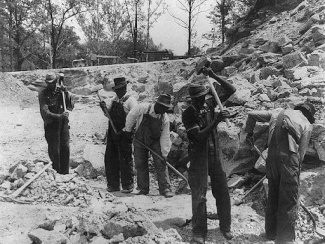
The Emancipation Proclamation didn’t actually end slavery. The 13th amendment to the United States Constitution “abolished slavery and involuntary servitude, except as punishment for a crime.”
This means prisoners are STILL free to be enslaved!
Practices like sharecropping and “debt peonage” made Black people work for their former owners from the time they were enslaved until AFTER “emancipation.”
But laws like the “Black Codes” also sought to re-enslave the formerly enslaved – through imprisonment!
These laws criminalized Black people for “crimes” like loitering, “vagrancy,” and not having identification. And this history gave way to a prison system that disproportionately imprisoned Black people while profiting from their free labor.
After the Civil war, more Black people were sent to prison than ever before. A practice called “convict leasing” sold prisoners to companies ready to exploit their labor. And with this new influx of imprisoned Black people, big industries like mining, railroads, and plantations profited hugely. For example, by 1898, leasing was 73% of Alabama’s revenue!
Even though convict leasing as it existed back then eventually came to an end as a popular practice, incarcerated people are STILL essentially enslaved today. Many of our essential products and services are produced by prison labor – and they’re paid pennies.
Our ancestors worked to abolish slavery, and we can fight to end its violent offspring – the prison industrial complex.